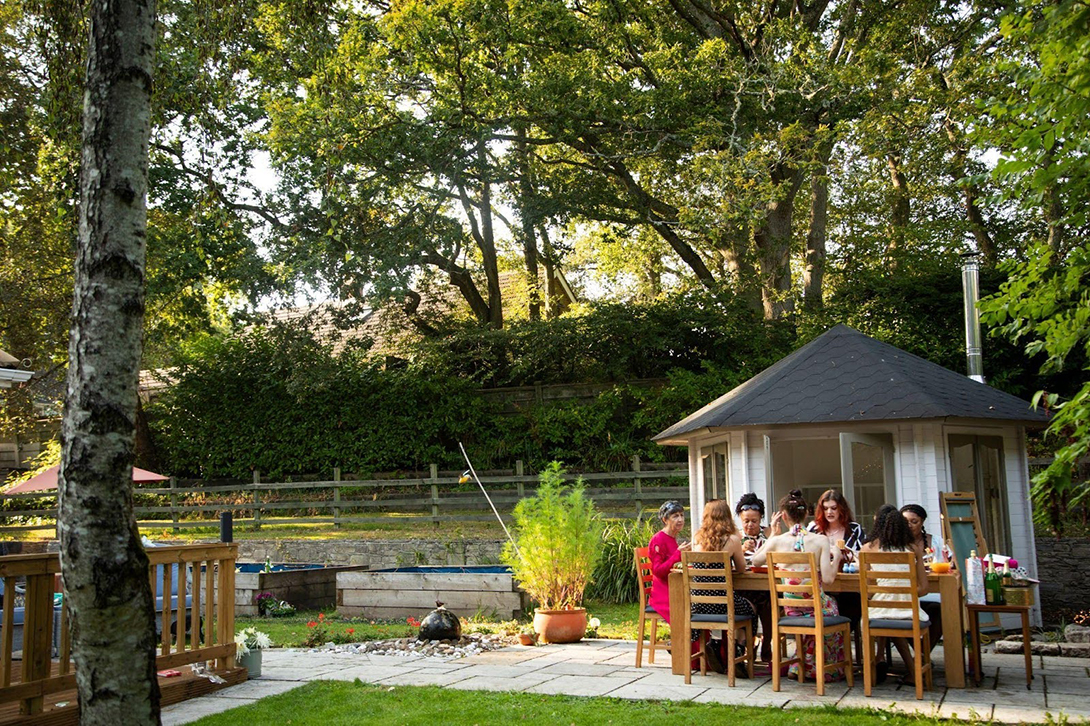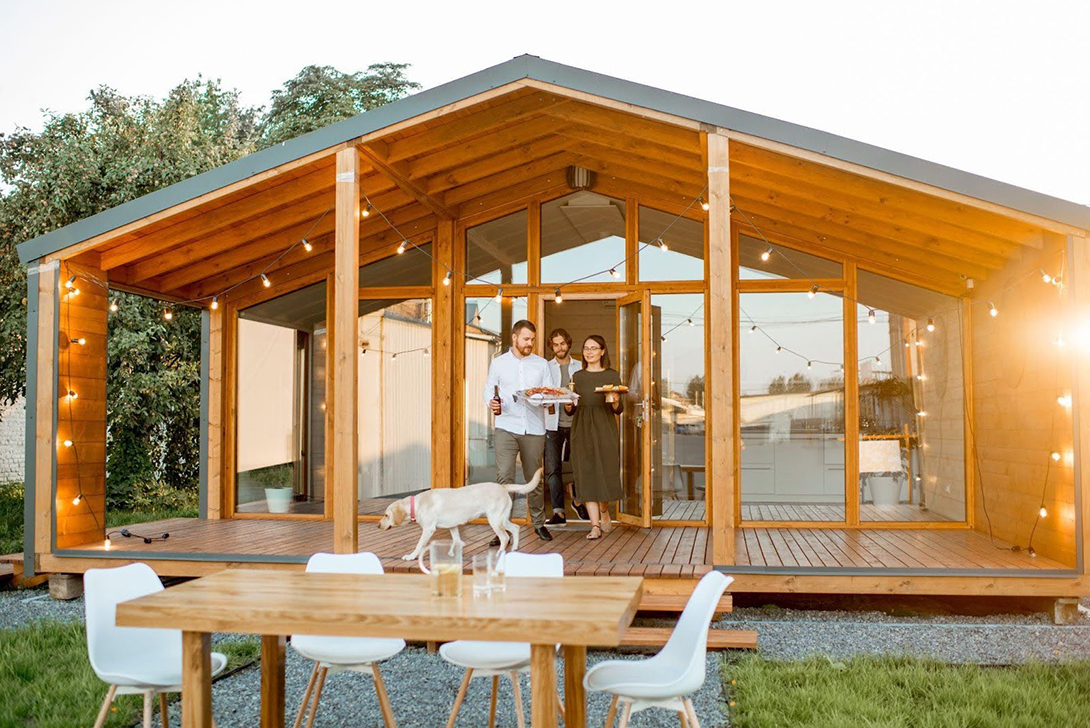As a real estate agent, you’re always looking for ways to add value for your clients. One of the most exciting trends in real estate today is the rise of Accessory Dwelling Units (ADUs). These versatile living spaces offer a myriad of benefits, making them a smart investment for homeowners and buyers alike. In this comprehensive guide, we’ll delve into what ADUs are, their benefits, and why they might be the perfect addition to your property.
What is an Accessory Dwelling Unit (ADU)?
An Accessory Dwelling Unit (ADU) is a secondary housing unit on a single-family residential lot. ADUs come in various forms, including detached units, garage conversions, basement apartments, or even attic spaces. They are fully functional living spaces, complete with a kitchen, bathroom, and sleeping area. ADUs can be as simple as a small studio or as complex as a multi-bedroom apartment.
ADUs are known by various names, including granny flats, in-law suites, secondary suites, or backyard cottages. Despite the different names, the concept remains the same: creating a self-contained living space within the confines of an existing property.
The Benefits of ADUs
-
Additional Income Stream
One of the most attractive benefits of an ADU is the potential for rental income. Whether you choose to rent it out long-term or as a short-term vacation rental, an ADU can provide a significant boost to your household income. THis can be particularly advantageous in areas with a high rental demand. For instance, a well-located ADU could command premium rental rates, contributing to your financial stability and helping to pay off your mortgage faster. -
Increased Property Value
Adding an ADU can significantly increase your property’s value. Many buyers are looking for properties with additional income potential or flexible living arrangements, making homes with ADUs highly desirable. This can lead to a higher resale value and a faster sale when you decide to put your home on the market. According to some real estate experts, properties with ADUs can see an increase in value by up to 20-30%. -
Flexible Living Arrangements
ADUs offer a great solution for multigenerational living. They can provide a private space for aging parents, adult children, or extended family members while maintaining independence and privacy for everyone. This flexibility can be invaluable for families needing to accommodate changing life circumstances. Additionally, ADUs can serve as a home office, guest house, or even a studio for creative pursuits. This flexibility makes ADUs a versatile addition that can adapt to various needs over time. -
Sustainable Living
ADUs can be a more sustainable housing option. THey typically have a smaller footprint and require fewer resources to build and maintain compared to a full-sized home. By utilizing existing infrastructure and reducing urban sprawl, ADUs contribute to more efficient land use and lower environmental impact. Many ADUs are designed with energy-efficient features, further enhancing their sustainability. Solar panels, energy-efficient appliances, and sustainable building materials can all be incorporated into ADU designs. -
Affordable Housing Solution
With rising housing costs, ADUs can provide an affordable housing option for renters. They offer a more cost-effective solution compared to traditional single-family homes or apartments, making them an attractive option for young professionals, students, and small families. For homeowners, this means an opportunity to contribute to the local community by providing affordable housing options, which is often a critical need in many urban areas.
How to Get Started with an ADU
-
Check Local Zoning Laws
Before you begin planning an Adu, it’s crucial to check your local zoning laws and regulations. Each municipality has its own set of rules regarding ADU construction, including size restrictions, design requirements, and permitting processes. Some areas have streamlined the approval process for ADUs, while others may have more stringent requirements. Understanding these regulations upfront can save you time and avoid potential legal issues down the road. -
Design and Planning
Work with a professional architect or designer to create a plan that meets your needs and complies with local regulations. Consider the layout, amenities, and how the ADU will integrate with your existing property. Think about the long-term useability of the space: will it serve its purpose for years to come? Engage with professionals who have experience in ADU construction to ensure that your design is both functional and compliant. -
Financing Your ADU
There are various financing options available for building an ADU, including home equity loans, construction loans, and government grants. Some municipalities and states offer incentives or subsidies to encourage the construction of ADUs. Consult with a financial advisor to determine the best option for your situation. It’s also worth exploring any local programs or tax incentives that might be available to help offset construction costs. -
Hiring a Contractor
Choose a reputable contractor with experience in building ADUs. They will help you navigate the construction process, from obtaining permits to completing the build on time and within budget. Look for contractors with a track record of successful ADU projects and check references to ensure they have satisfied previous clients. A good contractor will also be knowledgeable about local building codes and regulations, helping to ensure that your project runs smoothly. -
Marketing Your ADU
If you plan to rent out your ADU, effective marketing is key. Highlight the benefits of the unit, such as its private entrance, modern amenities, and proximity to local attractions. Utilize online rental platforms and social media to reach a wider audience. Professional photos and a well-crafted description can make your listing stand out. Consider offering virtual tours or video walkthroughs to attract potential renters who may not be able to visit in person. -
Managing Your ADU
Once your ADU is up and running, you’ll need to manage it effectively, especially if you’re renting it out. This includes maintaining the property, handling tenant relations, and keeping up with local rental laws and regulations. Property management companies can take on these tasks if you prefer a hands-off approach, though they will charge a fee for their services. Alternatively, you can manage the property yourself and maximize your rental income.
Conclusion
Accessory Dwelling Units offer a wealth of benefits, from generating additional income to providing flexible living arrangements and increasing property value. As a real estate agent, understanding the potential of ADUs can help you better serve your clients and stay ahead in a competitive market. Whether you’re considering adding an ADU to your own property or advising clients on the benefits, these versatile units are a smart investment for the future.
ADUs represent an innovative solution to many of the housing challenges we face today. By making efficient use of existing space and infrastructure, they provide a sustainable, affordable, and flexible housing option that can benefit homeowners, renters, and communities alike.
Ready to explore the potential of ADUs for your property? Contact me today to schedule a consultation and take the first step towards unlocking the benefits of an ADU!

